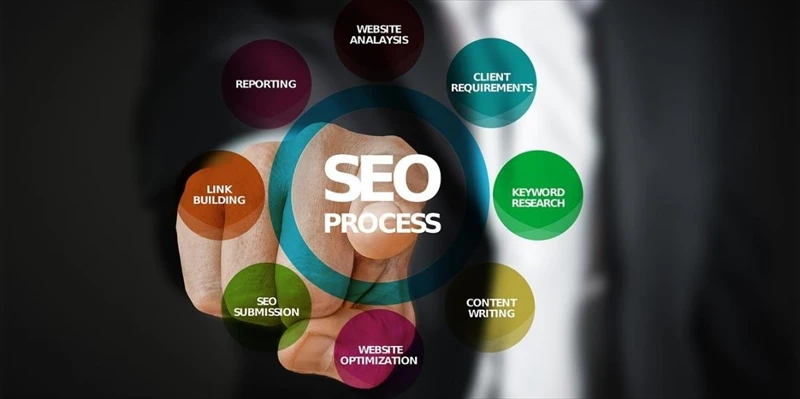On-Page SEO
On-Page SEO. Table of Contents Website Page Errors Website URL Standards Keyword Research Metadata Application (Title,…

On-Page SEO
Table of Contents
- On-Page SEO
- Website Page Errors
- Website URL Standards
- Keyword Research
- Metadata Application (Title, Meta Description, h1, and subtitle)
- Site Loading Speed
- XML Sitemap
- Social Media Icons
- Content Optimization
- Schema Markups
- Website Structure and Architecture
- Contact information
I would like to start my article by talking about general acceptance. If you do not lay the foundations of the structure firmly, you will see the collapse of the structure you have created, although not immediately. This general acceptance also applies to SEO. Even if your off-page strategies are great, we won’t achieve our goal if you don’t have on-page SEO strategies. Most of those dealing with e-commerce know this and act accordingly, but some mistakes are made while evaluating.
Website Page Errors
The first thing to do is to detect broken links (404 pages) or temporary redirects (302 redirects) on your site. You can use many different sites for this. Create a list of all the links that need to be redirected and forward these links with the help of HTACCESS, a plugin, or a control panel.
For 404 errors, you should make sure that broken links are redirected to the appropriate new pages. If there are no new pages on your site that you can redirect broken links too, you should redirect them to the homepage.
You should have turned pages with a 302 error into a 301 redirect as a result. In this way, you will make your site easier to scan and read for search engine bots and visitors.
Website URL Standards
For this step, the pages on your site must not have more than one URL address. You should make sure that non-“www“ 301 redirects are not redirected to “www” versions, or something like that. Another case is the extensions of URL pages. For example, www.asydigital.com and www.asydigital.com/home.php addresses go to the homepage. In some cases, they can be viewed as duplicates. Make sure all URL addresses are unique. If there are different extensions or different URL addresses for a page, they will be seen as duplicates. When you scan all the links on your site, you can see the duplicate URL addresses. You should redirect them to the appropriate pages with a 301 redirect. At the same time, if your site is an e-commerce site, you should make sure that all standard pages have the “rel-canonical” tag. When a page is classified as price or rating, this page generates a new page/URL address. Therefore, it is necessary to place the relevant “re-canonical tag”.
Keyword Research
There is no need to dwell on this subject at length. You can read our article about the keyword "Keyword Competition" to carry out keyword research. Even if you don’t know about SEO, you know that keyword research needs to be done. You should perform keyword research carefully and with the right parameters. Keyword research is one of the most important parts of on-page SEO.
Metadata Application (Title, Meta Description, h1, and subtitle)
After doing the appropriate keyword research, your next step is to create complementary metadata tags for all your eligible pages. In this way, on-page SEO improves and your site can rank first in search engines.
- Title
You should include descriptive information in the title. For example, you can use a title tag like “On-Page SEO – ASY Digital”. Descriptive title tags look more natural and generate more conversions. Recommended lengths for title tags are 55-60 characters. Headlines that will be longer than this will negatively affect the user experience.
- Meta Description
We create the meta description for more users. This part does not have a big impact on search engine rankings, but searchers learn what the page is about, and thanks to this tag, you send them a call to action. When entering the Meta Description section, be careful to choose messages that will enable the searcher to enter the site. Recommended Meta Description length is between 155-160 characters.
- H1
Try to provide descriptive information by using the relevant keyword in the H1 tag according to the page structure, but while doing this, consider the user experience.
- Subtitle
While optimizing all tags, you should also optimize images. Be sure to use descriptive subtitle tags for all images. This way, people searching on Google images can find you and bring traffic to your site.
Site Loading Speed
We are now in the age of speed and most of the users do not wait for the slow loading sites to open and they leave the page. Google is aware of these trends of users and considers the current speed of sites as a ranking criterion.
You can check how fast your site loads using Google’s Page Insight tool. Google considers site speed in search results ranking. That’s why it’s important to check this. 90+ points is a good number for both desktop and mobile versions of your site. If your site scores below this, you should listen to Google’s suggestions on the same page and make the arrangements on your site.
XML Sitemap
Make sure the XML sitemap is created on your site. The easiest way to do this is to check your site at www.asydigital.com/sitemap.xml. If you see a 404 page appearing here or the homepage appears, your site does not have an XML map. A sitemap is required for all major search engines to crawl your site easily. There are many tools that will allow you to create the XML sitemap. You must place the XML sitemap on the site server using one of them. If you are using WordPress or different content management systems, you can create the sitemap with the help of the plugin.
Social Media Icons
Make sure you have an account on important social media sites for your site. Facebook, Twitter, Instagram, Linked In and Google+ are important social media sites. Go one step further and embed the icons of these social media sites on your site. In this way, Google’s bots can understand that your site is linked to social media pages, but these icons also increase the user experience. A site that does not have a social media account is not seen as a reliable site by users anymore.
Content Optimization
A lot of research has been done on whether the content is long or short. According to research, long content is always advantageous. When creating your content, make sure to use more than 300+ words. While doing this, try not to affect the readability of your articles. Having more content on your site will not harm your site, but your site may suffer if the content is less. The more content on your site, the more likely you are to appear in search engine results when relevant searches are made.
Schema Markups
The markups help search engines understand what the information on the site is about. If you think of it as an official company site and address, this information is properly reflected in the search results with the help of formatting. If you have a site that sells products, Google may show reviews and ratings in search results. If you are a writer, your picture will appear next to your article in the search results. This way, users can see how popular a product is, even if they don’t click on the results. It is extremely important that you use Schema markups.
Website Structure and Architecture
Make sure all your pages are linked by a hierarchy, thanks to the main navigation elements. This is also called the “silo structure”. It is a structure in which subjects are arranged hierarchically. Pages on your site should have a logical order. For example, if you have a website about flowers, the URL structure might look like this:
- website.com/flowers/rose
- website.com/flowers/tulip
- website.com/flowers/orchid
If you create a URL structure in this way, you will establish logical links between different pages. Also, avoid creating pages that are not linked to any navigation elements, categories, or pages. Google’s bots find pages by following links and pages. If a page is not internally linked, it will not be indexed by search engines.
Contact information
This is another area that gives your site credibility. You should always include your contact information on your site. Email, address, or phone number are within the scope of contact information. Whatever your site is about, users may want to contact you. However, contact information should be easily accessible on your site. For example, click here for more information about ASY Digital.
These are the basic elements that you should consider in your on-page SEO work. Remember, these elements may differ from person to person, from site to site, or according to the SEO campaign followed.

